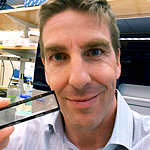Biomarkers for early intervention in Parkinson disease (U01)

Summary
On the cellular level, proteins are the building blocks of our organs and brain. In addition to these building blocks, each cell needs a specific set of instructions that guide it to produce the right kind and the right amount of building blocks necessary for doing the special job the cell is supposed to do. Other molecules, including regulatory ribonucleic acids (regulatory RNAs), provide these instructions. While previously some of these were considered "junk" by some scientists, their role in the complexity of biological function is becoming clearer. Dr. Scherzer and others have already found that these previously disregarded RNAs are quite active in nerve cells and may have an impact in the onset and progression of Parkinson's disease. This offers a potentially ground breaking opportunity for biomarker development. Initially, the team will search for these RNAs associated with Lewy bodies, the cellular hallmark of Parkinson's, in brain tissue. Then, this team will look for related biomarkers in the bloodstream and cerebrospinal fluid. The Scherzer lab is also cooperating to create a Harvard-National Institute of Neurological Disorders and Stroke (NINDS) partnership. Dr. Scherzer and his colleagues have developed an impressive data and biospecimens bank for biomarkers discovery, and bringing that resource to NINDS as a partnership will help the Parkinson's Disease Biomarkers Program speed up biomarkers discovery significantly.